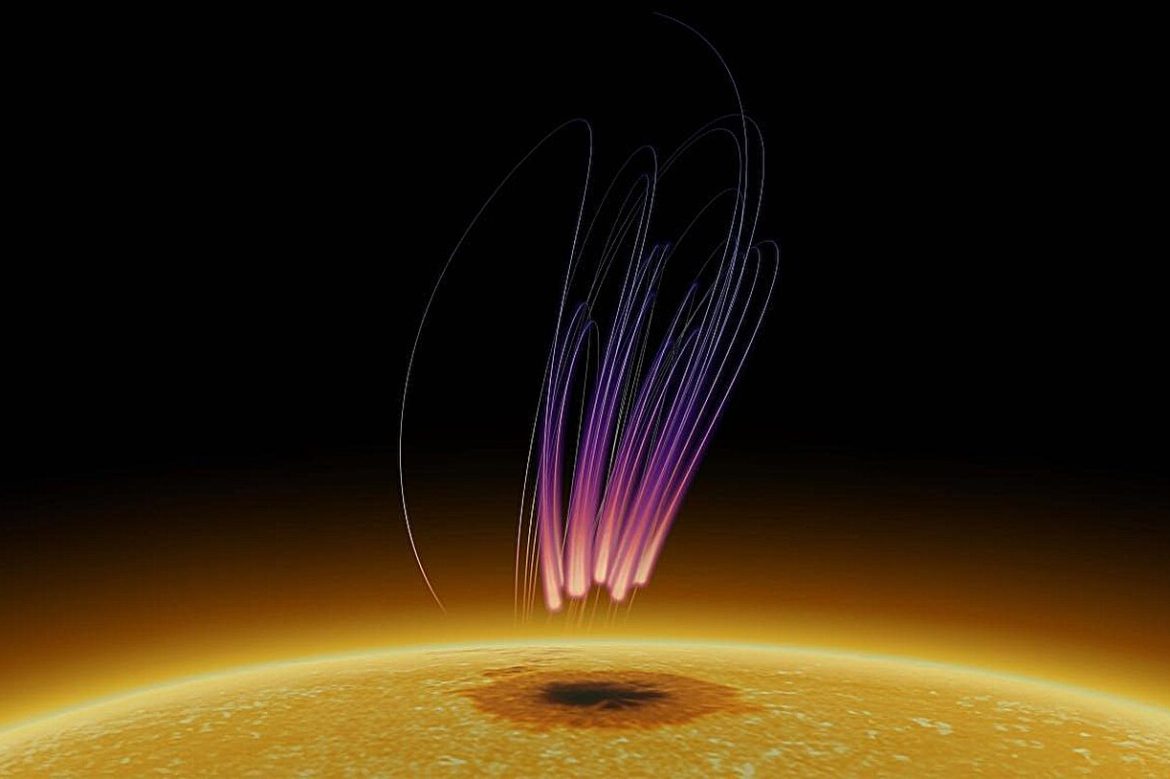
Aurora: The Sun’s Flaming Hair
The aurora is a mesmerising yet elusive phenomenon that piques the curiosity of everyone. Over the years, researchers have unveiled its occurrence on planets beyond Earth. Astronomers have observed auroras in the polar regions of Venus, Mars, Jupiter, Uranus, and Neptune.
More recently, to their astonishment, scientists have identified radio waves on the Sun strikingly similar to Earth’s auroras. While sunspots, the dark and cold areas on the Sun, have long intrigued the scientific community, researchers from the NJIT Center for Solar-Earth Research have meticulously recorded radio observations of an unusual aurora-like display 40,000 kilometers above sunspots. This discovery has the potential to reshape our comprehension of the Sun’s magnetic processes and provide insights into analogous phenomena in distant stars.
The protracted polarized radio bursts detected on the sunspot persisted for over a week. In stark contrast to typical solar radio bursts, which usually endure for minutes to hours, this revelation is a thrilling development that could revolutionize our understanding of stellar magnetic processes.
On Earth, auroras result from charged and energetic solar particles swiftly traversing regions of the atmosphere near the poles. Oxygen and nitrogen molecules in the atmosphere become excited in areas where the protective magnetic field is weakest, causing the molecules to emit energy in the form of light, presenting vibrant shapes rippling across the sky.
Solar ejections typically precede the knotting and sudden curling up of magnetic fields around the Sun in sunspots. This dynamic process results in the release of energy, triggering radiation bursts known as solar flares and potent bursts of solar material called coronal mass ejections (CMEs). Significantly, unlike Earth’s auroras, emissions from sunspot auroras occur at a much higher frequency due to the Sun’s magnetic field being thousands of times stronger than Earth’s.
Given that sunspot radio auroras represent the first detection of their kind, the next phase involves retrospective analysis to determine if previously recorded solar flares exemplify this newly identified emission. The team’s observations draw connections between solar findings and magnetic events around other stars, potentially prompting solar physicists to re-evaluate existing models of stellar magnetism.
In this manner, these studies may yield crucial insights into the interaction of energetic particles and magnetic fields, not only in our Sun but also in stars far beyond our Solar System, where long-lasting starspots are prevalent.
REFERENCES
- 1. https://www.livescience.com/space/the-sun/astronomers-spot-aurora-on-the-sun-for-the-1st-time
- 2. https://www.space.com/sunspot-emissions-similar-to-auroras-earth
